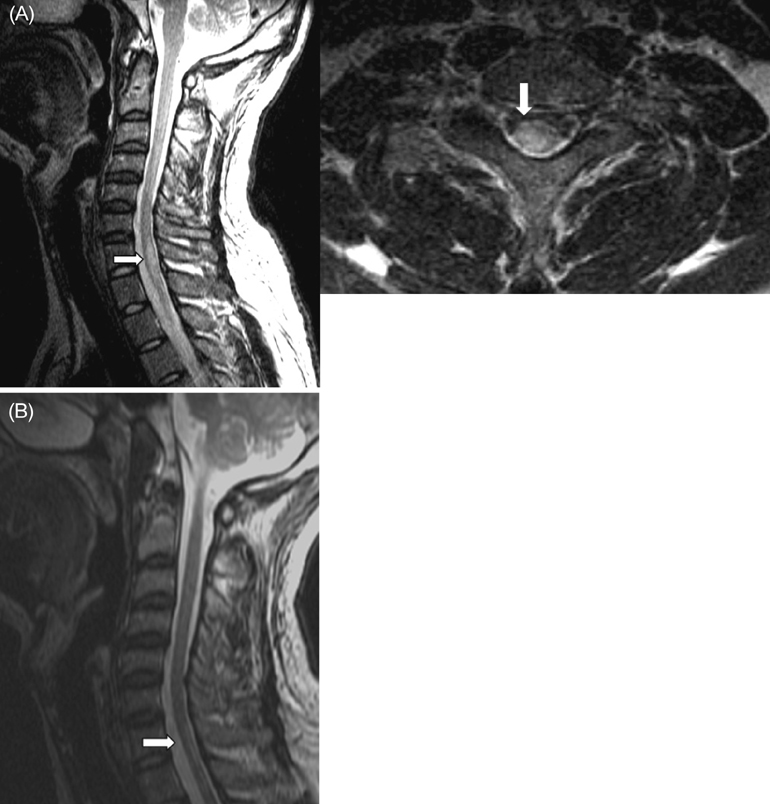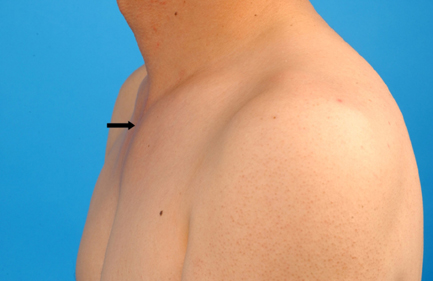J Clin Neurol.
2007 Dec;3(4):215-218. 10.3988/jcn.2007.3.4.215.
A Case Report of Reiter's Syndrome with Progressive Myelopathy
- Affiliations
-
- 1Department of Neurology, Samsung Medical Center, Sungkyunkwan University School of Medicine, Seoul, Korea. bjkim@skku.edu
- 2Department of Neurology, College of Medicine, The Catholic University of Korea, Seoul, Korea.
- 3Department of Neurology, National Cancer Center, Ilsan, Korea.
- KMID: 1808563
- DOI: http://doi.org/10.3988/jcn.2007.3.4.215
Abstract
- Reiter's syndrome belongs to the family of spondyloarthropathies that usually present with a triad of arthritis, urethritis, and uveitis. The diagnostic criteria include clinical, radiological, and genetic findings, and the response to treatment. Nervous system involvement in Reiter's syndrome is extremely rare. We report here on a 36-year-old man who initially presented with progressive cervical myelopathy and was diagnosed as Reiter's syndrome 2 years later. The myelopathy was stable after treatment with methotrexate and sulfasalazine. This case suggests that Reiter's syndrome can present as progressive myelopathy and should be considered in the differential diagnosis of treatable myelopathies.
Keyword
MeSH Terms
Figure
Reference
-
1. Montanaro A, Bennett RM. Myelopathy in Reiter's disease. J Rheumatol. 1984. 11:540–541.2. Kim TH, Uhm WS, Inman RD. Pathogenesis of ankylosing spondylitis and reactive arthritis. Curr Opin Rheumatol. 2005. 17:400–405.
Article3. Hermann E, Yu DT, Meyer zum Buschenfelde KH, Fleischer B. HLA-B27-restricted CD8 T cells derived from synovial fluids of patients with reactive arthritis and ankylosing spondylitis. Lancet. 1993. 342:646–650.
Article4. Colmegna I, Espinoza LR. Recent advances in reactive arthritis. Curr Rheumatol Rep. 2005. 7:201–207.
Article5. Khan MA. Update on spondyloarthropathies. Ann Intern Med. 2002. 136:896–907.
Article6. Unverferth DV, Beman FM, Ryan JM, Whisler RL. Reiter's aortitis with pericardial fluid, heart block and neurologic manifestations. J Rheumatol. 1979. 6:232–236.7. Cuchacovich M, Gatica H, Contreras L. Neurologic involvement in Reiter's disease. Report of 2 cases. Rev Med Chil. 1991. 119:687–690.8. Fendler C, Laitko S, Sorensen H, Gripenberg-Lerche C, Groh A, Uksila J, et al. Frequency of triggering bacteria in patients with reactive arthritis and undifferentiated oligoarthritis and the relative importance of the tests used for diagnosis. Ann Rheum Dis. 2001. 60:337–343.
Article9. Palazzi C, Olivieri I, D'Amico E, Pennese E, Petricca A. Management of reactive arthritis. Expert Opin Pharmacother. 2004. 5:61–70.
Article
- Full Text Links
- Actions
-
Cited
- CITED
-
- Close
- Share
- Similar articles
-
- Cervical Myelopathy due to Ossification of Yellow Ligament in a Patient with Reiter's Syndrome
- Reiter's Syndrome with Severe Joint Destruction: Case report
- A Case of Reiter`s Syndrome
- Progressive Quadriparesis following a Minor Trauma in a Patient with Klippel-Feil Syndrome: Case Report
- Chronic Progressive Radiation Myelopathy Associated with Radiation Therapy: A case report




